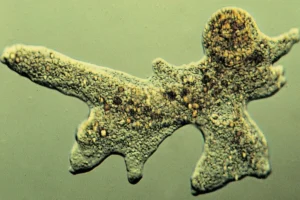
A study published on Wednesday in the journal Nature estimates that the Greenland Ice Sheet lost 5,091 sq km (1930 sq miles) of area between 1985 and 2022. This is the first comprehensive estimate of area loss on that scale over the whole ice sheet.
This reduction reflected the 1,034 gigatonnes (1.034 trillion kg) of ice lost as glaciers receded, shedding ice through ‘calving’ – when ice chunks break off from a glacier at its terminus.
The study is also the first to determine the amount of ice lost in Greenland as a result of glacial retreat. It shows that prior estimates of changes to the Greenland Ice Sheet’s mass balance – how much snow and ice is accumulated each year vs how much is lost – underestimated those losses by up to 20% due to a failure to account for glacier retreat.
The lost 5,091 square kilometres are roughly the size of the island nation of Trinidad & Tobago.
The study analyzed glacier location variations over time using over 200,000 satellite and AI measurements.
“In Greenland, we have these areas around the edges where everything is just kind of retreating and crumbling”, explained research co-author Alex Gardner, an earth scientist at NASA’s Jet Propulsion Laboratory.
“Previous approaches were not particularly effective in measuring that shift in the ice sheet. But the shift is enormous”, Gardner added.
The Greenland Ice Sheet is one of the world’s two remaining ice sheets, the other stretching across the Antarctic continent. It is made up of hundreds of glaciers and accounts for approximately 80% of Greenland’s land area.
The Greenland Ice Sheet, if melted, would raise world sea level by approximately 7.4 metres (23 feet).
With climate change warming the Arctic four times faster than the rest of the globe, experts predict that melting of the Greenland Ice Sheet would raise sea level by at least 27 cm (10.6 inches) owing to already occurring warming.
According to scientists, the latest estimate of ice loss from glacial retreat will have little effect on global sea levels but a significant impact on ocean circulation.
That much freshwater supplied to the salty ocean may enhance coastal currents around Greenland and diminish the Atlantic Meridional Overturning Circulation, which transports water from north to south and brings warmth to Europe.
Also read: China Offers To Mediate After Missile Strikes Between Iran And Pakistan
To read more such news, download Bharat Express news apps






















